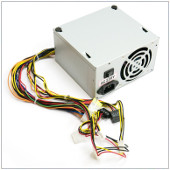The term ‘hard’ in hard drive shouldn’t refer to the difficulty many experience when they set out looking for a new one. It’s hard to deny the importance that hard drives still have to computers of all shapes, sizes, and operating systems -- but like the elusive concept of soulmates, how do we know which […]
 The term ‘hard’ in hard drive shouldn’t refer to the difficulty many experience when they set out looking for a new one. It’s hard to deny the importance that hard drives still have to computers of all shapes, sizes, and operating systems -- but like the elusive concept of soulmates, how do we know which one is right for us? We’ve put together a list of five things you should take into consideration prior to buying new hardware.
The term ‘hard’ in hard drive shouldn’t refer to the difficulty many experience when they set out looking for a new one. It’s hard to deny the importance that hard drives still have to computers of all shapes, sizes, and operating systems -- but like the elusive concept of soulmates, how do we know which one is right for us? We’ve put together a list of five things you should take into consideration prior to buying new hardware.
Hard Disk Drive VS. Solid State Drive
Firstly, you have to know which type of data storage you plan to use: Hard Disk Drive (HDD) or Solid State Drive (SSD).Capabilities of HDDs are on par with SSDs -- but that doesn’t mean there aren’t any pros and cons. An SSD is a type of drive that uses flash memory for storing data, as opposed to spinning metal disks found in the traditional HDD -- think of it like an extra large USB thumb drive.On the upside, SSDs are faster at reading and writing data. They require less energy, are silent, and generally have longer lifespans. Downsides include small data capacities and a heftier price tag. It all boils down to what you're going to your needs. Go for HDDs if you have budget restrictions or are looking for a backup/external drive; go for SSDs if the drive will run frequently-accessed files and programs.
Physical size and interface
After deciding between an HDD or SSD, you now have to choose a form factor. Luckily there are only two choices: the 3.5-inch drive and the 2.5-inch drive. The right one will likely depend on your current setup. With traditional HDDS, data is stored on spinning metal disks, meaning that more disks will be needed to expand data capacity. Because of this, desktop HDDs tend to be 3.5 inches with a maximum capacity of 4 TB, whereas laptops are 2.5 inches with a maximum capacity of 2 TB. SSDs are made smaller since they don’t require any removable parts, meaning they’ll fit easily into the 2.5-inch form factor. Adapters are available if you need to use the SSD in a 3.5-inch connector.Specifications and performance
Now that you know what kind of drive to buy, it’s time to narrow down the candidates and find the best one that suits your needs. Here are some factors you need to consider:- Storage capacity - HDDs come in various sizes, but due to physical limitations, they cap off at 4 TB. Whereas SSDs are much smaller and doesn’t exceed the 1 TB mark - some consumer-level SSDs rarely exceed 512GB.
- Transfer speed - Performance of consumer-level HDDs are determined by multiple factors, and revolutions per minute (RPM) is an important one. Higher RPM means faster data transfer between drives.
- Cache space - If a hard disk needs to transfer data from one section to another, a special area of embedded memory known as the cache is utilized. Larger cache enables data to be transferred faster (because more information can be stored at one time). Modern HDDs have cache sizes ranging from 8-12 MB.
- Access times - HDDs have a couple of factors that impact their performance. One is the time it takes for the reader to start reading or writing data from the drive. For SSDs, you want to look for sequential read and write speeds (also known as sustained reading and writing speeds). Just as long as the speeds are within the SATA connector’s max speed, you'll be fine.
- Failure rate - Though all things mechanical gradually wear and tear over time, not all HDDs are the same. Some models last six months where others make it past six years. You must do adequate research on a per-model basis before making a purchase.
External VS. Internal
The final step is to decide whether you want the hard drive to reside within of if it will get its own compartment outside. External drives are ideal for storage and backup purposes; they generally connect with a USB 2.0 that caps out at 480Mb/s -- newer models that support USB 3.0 boasts a max of 5.0Gb/s. Unless the model you get is USB 3.0 compatible, the speed will likely be insufficient when it comes to running an operating system.Speed issues aside, they’re portable and can be shared with multiple computers. They can even be plugged into TVs and media centers for direct playback. If portability falls second to speed, or if your current system lacks a working data drive, internal is the best choice.
Now that you’re armed with the necessary information, buying your next hardware should be a pleasant experience, like a walk in the park. If you have further questions or would like to know more, feel free to contact us by phone or email; we’re more than happy to help.
